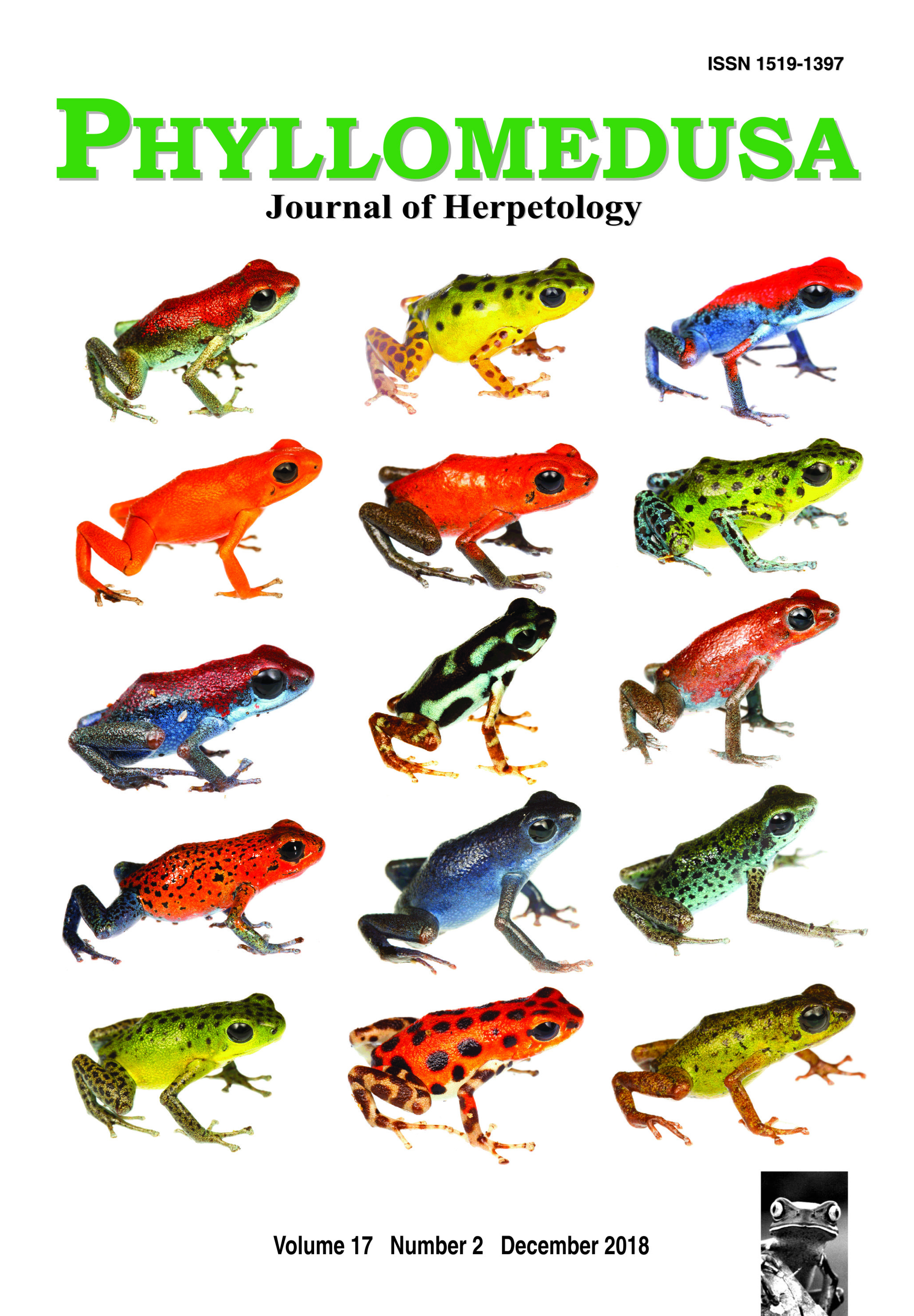Evaluation of tree frog tracking methods using Phyllomedusa trinitatis (Anura: Phyllomedusidae)
DOI:
https://doi.org/10.11606/issn.2316-9079.v17i2p233-246Keywords:
fuorescent powder, movements, radio-tags, radio telemetryAbstract
Evaluation of tree frog tracking methods using Phyllomedusa trinitatis (Anura: Phyllomedusidae). Investigating the behaviors of small, inconspicuous and cryptic animals can be helped by tracking their movements. The effectiveness of different tracking methods can be very dependent on behavior and ecology; radio-telemetry and thread bobbins have been widely used over a range of environments and taxa, but each presents problems. Phyllomedusa trinitatis is a tree frog found in Trinidad and Venezuela and has mostly been studied for its nest building and breeding behavior, but little is known about its behavior away from breeding ponds. This study aimed to identify the strengths and weaknesses, including impacts on the welfare of these frogs, of different tracking methods, thread bobbins and radio-telemetry, when used to track them in a dense rainforest environment. A pilot study found that fuorescent dyes were unsuitable for this species. Individuals were tested in laboratory conditions to determine the application time for each tracker and to test on this species the tracker 10% weight rule. The rule was found to be too restrictive for this frog; trackers up to 15% of body weight were used with no signifcant impacts on distances travelled. Frogs became lethargic when bearing trackers longer than two days, so we limited tracking in the feld to one overnight period. Of the 26 frogs tracked in the feld (nine radio-tags, 17 bobbins), 16 were successful (six radio-tags, 10 bobbins) and six untracked frogs were found in the feld during the day as controls. Bobbins were cheaper and allowed visualization of the detailed path taken, including substrates used, but caused more bruising due to entanglement, and individuals tracked with this method were less likely to return on following nights to the breeding ponds. Radio-tags had no threat of entanglement but were much more expensive and the signal was interrupted by the dense vegetation preventing some individuals from being found. There were no signifcant differences in the distances travelled by tracked or control frogs, from which we infer that these tracking methods did not impact signifcantly on movement. It appears that neither of these tracking methods work perfectly for Phyllomedusa in a densely vegetated environment, and that both incur welfare problems. Our study emphasizes the need to test out tracking methods on each species in each habitat.



 Impact Factor (JCR): 0.600
Impact Factor (JCR): 0.600 CiteScore: 1.0
CiteScore: 1.0